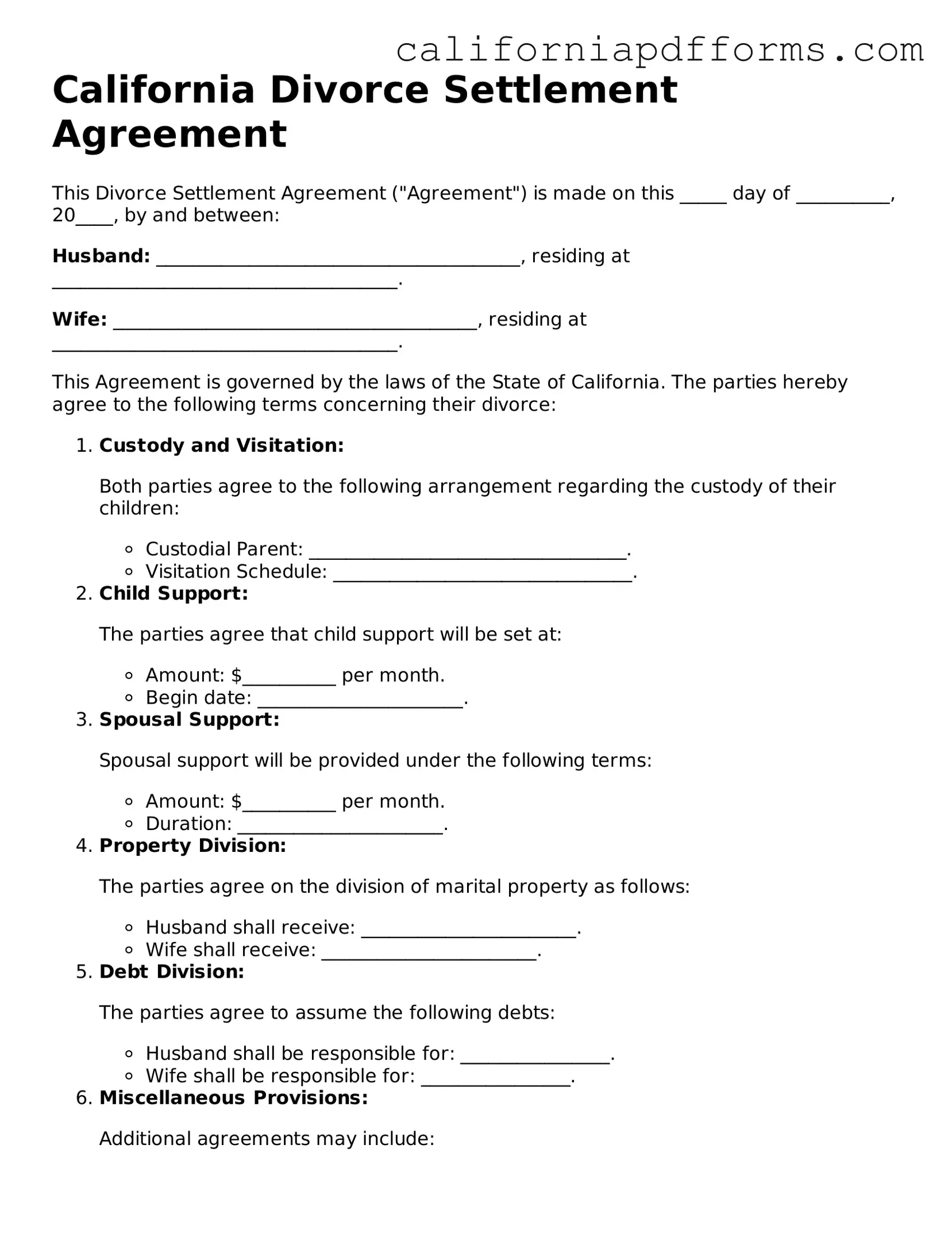What is a California Divorce Settlement Agreement?
A California Divorce Settlement Agreement is a legal document that outlines the terms and conditions agreed upon by both spouses during the divorce process. This agreement addresses various aspects, including property division, spousal support, child custody, and child support. It serves as a binding contract that both parties must adhere to after the divorce is finalized.
What should be included in the Divorce Settlement Agreement?
When drafting a Divorce Settlement Agreement, consider including the following key elements:
-
Property Division:
Clearly outline how marital assets and debts will be divided.
-
Spousal Support:
Specify any financial support one spouse will provide to the other, including duration and amount.
-
Child Custody:
Detail the custody arrangement, including physical and legal custody responsibilities.
-
Child Support:
State the amount of support to be paid and the payment schedule.
-
Other Considerations:
Address any other relevant issues, such as health insurance or tax implications.
How do I file the Divorce Settlement Agreement in California?
To file the Divorce Settlement Agreement in California, follow these steps:
-
Complete the agreement and ensure both parties sign it.
-
File the agreement with the court where your divorce case is pending.
-
Submit any required forms, such as a Notice of Entry of Judgment, if applicable.
-
Pay any necessary filing fees.
Once filed, the court will review the agreement and, if acceptable, will incorporate it into the final divorce decree.
Can the Divorce Settlement Agreement be modified?
Yes, a Divorce Settlement Agreement can be modified, but only under certain circumstances. Changes to child custody, child support, or spousal support may be requested if there is a significant change in circumstances. Both parties must agree to the modifications, and the court must approve any changes to ensure they are legally binding.
What happens if one party does not comply with the Divorce Settlement Agreement?
If one party fails to comply with the terms of the Divorce Settlement Agreement, the other party may seek enforcement through the court. This can involve filing a motion for enforcement, which may lead to court hearings. Potential consequences for non-compliance can include wage garnishment, payment of attorney fees, or even contempt of court charges.
Is legal representation necessary when creating a Divorce Settlement Agreement?
While legal representation is not mandatory, it is highly recommended. An attorney can provide valuable guidance, ensure that the agreement complies with California law, and help protect your rights. Having legal support can also facilitate negotiations and help both parties reach a fair settlement.
